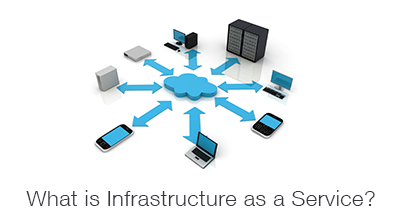What is Infrastructure as a Service (IaaS)?
Infrastructure-as-a-Service (IaaS) is a cloud service model that automates the management of certain computing resources.

IaaS, or infrastructure as a service, is related to software as a service and platform as a service, and is a type of cloud computing that delivers virtualized computing resources via the Internet. Unlike software as a service, which can encompass everything from applications and development tools to operating systems, infrastructure as a service focuses on delivering the hardware necessary for businesses.
What Does IaaS Do?
With most cloud technology, the focus is on software – apps and the like. Or, it might be on data storage and access. However, with IaaS, the focus is instead on providing virtualized infrastructure components that allow businesses to create their own IT platforms. You will not find any software within IaaS. It is completely hardware related.
For instance, you’ll find virtualized server space, as well as load balancers, virtualized network connections and a great deal more. Where does the physical hardware come from on which virtualized IaaS is based? It comes from a pool of geographically dispersed data centers, some of which might be located halfway around the world.
What Benefits Does IaaS Provide?
Infrastructure as a service can deliver quite a few benefits. Many are similar to those found with any type of cloud service, but some are specific to IaaS alone.
Reduced Hardware CAPEX: Hardware capital expenses are perhaps the most expensive part of building your own IT infrastructure. While you have a great deal of capital tied up in human talent, you have a great deal more invested in the physical infrastructure that creates the network itself. With IaaS, you don’t have to worry about that cost, allowing you to save a great deal of time and money.
Scalable: Another significant benefit to IaaS is the fact that it is completely scalable. Need more hardware at your disposal for a big project? That’s not a problem. Need to cut back on the hardware you’re using now that your project is over? Again, that’s not a problem. You’re also able to scale immediately, with no delays.
Pay as You Go: This benefit is tied to cloud technology in general, but allows you to achieve utility style costs and pay as you go. That ensures you’re not hit with major bills for infrastructure installation, and can tailor your usage to actual demand.
Public or Private: IaaS can be configured to work with the public cloud, but it can also work just as well with a private cloud, or even with a hybrid cloud.
Better Uptime: Because you’re relying on a network of resources located outside your business, the failure of a single component will not affect you the way it would if you were tied to just the infrastructure within your business. If something happens to one component, you’ll be automatically switched to another.
As you can see, IaaS has significant benefits that allow businesses to enjoy everything from better uptime to better savings. However, it’s not the right choice for everyone – you’ll need to carefully consider your needs before choosing IaaS.